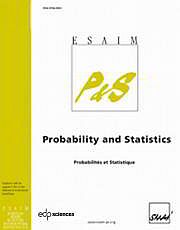Crossref Citations
This article has been cited by the following publications. This list is generated based on data provided by Crossref.
Baraud, Yannick
Giraud, Christophe
and
Huet, Sylvie
2009.
Gaussian model selection with an unknown variance.
The Annals of Statistics,
Vol. 37,
Issue. 2,
Boulanger, Jérôme
Kervrann, Charles
and
Bouthemy, Patrick
2009.
A simulation and estimation framework for intracellular dynamics and trafficking in video-microscopy and fluorescence imagery.
Medical Image Analysis,
Vol. 13,
Issue. 1,
p.
132.
Boulanger, Jérôme
Muresan, Leila
Tiemann-Boege, Irene
and
Orlando, Ludovic
2012.
Massively Parallel Haplotyping on Microscopic Beads for the High-Throughput Phase Analysis of Single Molecules.
PLoS ONE,
Vol. 7,
Issue. 4,
p.
e36064.
Antoniadis, A.
Glad, I.K.
and
Mohammed, H.
2015.
Local comparison of empirical distributions via nonparametric regression.
Journal of Statistical Computation and Simulation,
Vol. 85,
Issue. 12,
p.
2384.
Amato, Umberto
Antoniadis, Anestis
De Feis, Italia
and
Gijbels, Irène
2024.
Unsupervised curve clustering using wavelets.
Advances in Data Analysis and Classification,


